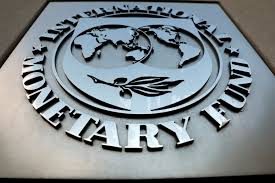
THE International Monetary Fund (IMF) slashed its growth forecast for the region, citing a widening gap between advanced economies and many emerging market and developing economies.
In its latest World Economic Outlook (WEO), the IMF said the ASEAN-5 bloc is now projected to grow by 4.3 percent from its 4.9 percent forecast in April this year. The ASEAN-5 cluster consists of the Philippines, Singapore, Malaysia, Thailand and Indonesia.
IMF’s lowered forecast for ASEAN-5 mirrors their downgraded view for Japan, China and India. For Japan, the IMF cut its forecast of 3.3 percent to 2.8 percent. For China, the previous forecast of 8.4 percent growth is down to 8.1 percent. Their projection for India’s economic expansion, meanwhile, was slashed from 12.5 percent to 9.5 percent.
Its forecast for world output, however, remained steady at 6 percent as advanced economies such as the US and UK have got better growth expectations for the year.
For the US, the previous 6.4 percent projection was upgraded to 7 percent while the UK is now expected to grow also by 7 percent from the earlier 5.3 percent projection.
IMF Economic Counsellor and Director of the Research Department Gita Gopinath said the world is experiencing a divergent recovery path, as the gap between advanced economies and emerging economies is growing farther apart.
“These revisions reflect to an important extent differences in pandemic developments as the delta variant takes over. Close to 40 percent of the population in advanced economies has been fully vaccinated, compared with 11 percent in emerging market economies, and a tiny fraction in low-income developing countries,” Gopinath said.
“Faster-than- expected vaccination rates and return to normalcy have led to upgrades, while lack of access to vaccines and renewed waves of COVID-19 cases in some countries, notably India, have led to downgrades,” the IMF official added.
In June this year, the IMF cut its growth projection of the Philippines from 6.9 percent to 5.4 percent for this year.
What pulled the economy down in the first half of the year is largely the second wave of Covid-19 cases in the country, IMF Article IV Consultation Mission Head Thomas Helbing told reporters in a virtual briefing.
The resurgence of cases during the period necessitated stricter quarantine measures which disrupted economic activity and “weighed” on market confidence, Helbing added.

